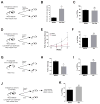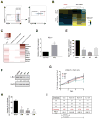Identification and Targeting of Long-Term Tumor-Propagating Cells in Small Cell Lung Cancer
- PMID: 27373157
- PMCID: PMC4956576
- DOI: 10.1016/j.celrep.2016.06.021
Identification and Targeting of Long-Term Tumor-Propagating Cells in Small Cell Lung Cancer
Abstract
Small cell lung cancer (SCLC) is a neuroendocrine lung cancer characterized by fast growth, early dissemination, and rapid resistance to chemotherapy. We identified a population of long-term tumor-propagating cells (TPCs) in a mouse model of SCLC. This population, marked by high levels of EpCAM and CD24, is also prevalent in human primary SCLC tumors. Murine SCLC TPCs are numerous and highly proliferative but not intrinsically chemoresistant, indicating that not all clinical features of SCLC are linked to TPCs. SCLC TPCs possess a distinct transcriptional profile compared to non-TPCs, including elevated MYC activity. Genetic and pharmacological inhibition of MYC in SCLC cells to non-TPC levels inhibits long-term propagation but not short-term growth. These studies identify a highly tumorigenic population of SCLC cells in mouse models, cell lines, and patient tumors and a means to target them in this most fatal form of lung cancer.
Copyright © 2016 The Author(s). Published by Elsevier Inc. All rights reserved.
Figures







References
-
- Anderson WC, Boyd MB, Aguilar J, Pickell B, Laysang A, Pysz MA, Bheddah S, Ramoth J, Slingerland BC, Dylla SJ, Rubio ER. Initiation and characterization of small cell lung cancer patient-derived xenografts from ultrasound-guided transbronchial needle aspirates. PLoS One. 2015;10:e0125255. - PMC - PubMed
-
- Beck B, Blanpain C. Unravelling cancer stem cell potential. Nat Rev Cancer. 2013;13:727–738. - PubMed
MeSH terms
Grants and funding
LinkOut - more resources
Full Text Sources
Other Literature Sources
Medical
Molecular Biology Databases
Miscellaneous

